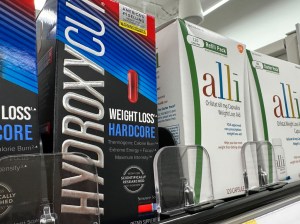The sole source of every Long Islander’s drinking water is being threatened by over-development, pesticides and rising sea levels. But are the policymakers pitching sound planning solutions or something more worthy of being flushed down the toilet?
Suffolk County recently released its much-anticipated Comprehensive Water Resources Management Plan, a 1,040-page document that focuses on nitrogen reduction, the most imminent threat to water quality thanks to the hundreds of thousands of homes, businesses and farms that have cesspools instead of sewer connections. What’s just as troubling is that many of these septic systems were built before 1972.
Besides calling for the expansion of the county’s sewer infrastructure—one estimate says completely covering Suffolk would cost $9 billion—the plan tellingly calls for ways to “stimulate development in order to promote economic growth and stability.”
How very interesting that a proposal to protect Long Island’s crucial water resources mentions the need to promote development.
Overall, the new plan is a decent document, but like so many actions taken by the county as of late, it typifies a flawed philosophy that prioritizes economic growth first, and everything else second. Any solid environmental planning effort is based on scientific data, and this latest comprehensive plan is no exception. But its solutions may not be substantive enough. And putting development over water protection will not make environmental actions any stronger.
Created in 1987, Suffolk’s first water management plan “provided extensive documentation of the county’s aquifer system, groundwater quantity and groundwater quality.” This plan followed the much acclaimed federally funded Long Island Comprehensive Waste Treatment Management Plan, which was prepared in ’78 pursuant to Section 208 of the Federal Water Pollution Control Act. This groundbreaking report, commonly referred to as the “208 study,” highlighted the linkage between land use and groundwater quality.
Subsequently, the ’87 “Comp Plan” laid the foundation for future planning efforts that forever changed the physical layout of LI. Without that effort and other plans to implement its recommendations, the 100,000 acres of the Pine Barrens would long ago have been subdivided and developed, neighborhoods would be noticeably denser, and some of Suffolk’s largest parks would cease to exist.
But this latest iteration of the comprehensive plan should shift its philosophic focus from mere management to actual water protection, and employ the resources of the county to properly reduce contamination and protect the aquifer.
The current plan stresses the importance of reducing nitrogen but it doesn’t emphasize enough the “soft” solutions, such as the most effective water protection tool, preserving open space or designing green buildings and pushing for tougher zoning. Instead, the plan focuses on sewers, and their relative effectiveness in achieving nitrogen reduction. The push for sewers reveals the county’s true intentions: “stimulate development in order to promote economic growth and stability.”
In this age, localities too often decide to increase density in Special Groundwater Protection Areas (SGPA), which previous municipal efforts highlighted as too environmentally sensitive for development. Municipalities must be reined in—but this comprehensive plan isn’t hard enough on them to do it. Just recently, it was reported that the Town of Brookhaven’s Planning Board voted unanimously to subdivide a lot in the South Setauket SGPA and allow residential units without sewer connections, while Islip Town wants to place Heartland Town Square, the much discussed mega-development, in the Oak Brush Plains SGPA.
The aquifer won’t be slowly poisoned by large actions, but rather by thousands of small ones. This is the reality the comprehensive plan must not only anticipate, but prevent.
Many Suffolk residents don’t realize that their neighborhood’s layout was determined not only by what was considered aesthetically pleasing by the builder, but by strict rules that govern density and wastewater flows. In 1980, Article 6 of the Suffolk County Sanitary Code brought the findings of the 208 study to life. The number of units in a development was determined not by a developer’s desires, but rather, the unique limitations imposed by LI’s aquifer system as determined by its hydrogeologic zones, the geographic areas with differing water absorption rates.
From that point on, Suffolk enacted a litany of planning efforts geared toward aquifer protection. Article 6 is often the bane of developers’ existence. Thanks to strict limitations of growth in un-sewered areas, which encompasses roughly 74 percent of homes in Suffolk, an area’s ability to grow is essentially defined by its ability to handle wastewater impacts. The latest comprehensive plan doesn’t argue against development, but looks to accommodate it through hard infrastructure improvements.
Sewers are needed for environmental reasons, but they pose their own set of problems. According to the U.S. Geologic Survey, areas with sewers on LI have a lower water table thanks to increased water consumption. Inland sewage treatment plants discharge effluent not to the Great South Bay or the Sound, but back into the groundwater. Further, any discussion of expanding our wastewater infrastructure ignores the nearly insurmountable costs of doing so.
If Suffolk were to be completely sewered tomorrow, the aquifer would begin to heal itself thanks to the abundance of recharge provided by ample rainfall. By adding sewers to the county while increasing developmental density, we’re only maintaining the status quo—and our water quality will continue its degradation.
We need a true effort to protect our precious natural resource, not something to “stimulate development.” We cannot build our way out of our regional woes, especially when it comes to protecting our water and our waterways.
Rich Murdocco writes on Long Island’s land use and real estate development issues. He received his Master’s in Public Policy at Stony Brook University, where he studied regional planning under Dr. Lee Koppelman, Long Island’s veteran master planner. Murdocco will be contributing regularly to the Long Island Press. More of his views can be found on www.TheFoggiestIdea.org or follow him on Twitter @TheFoggiestIdea.





















